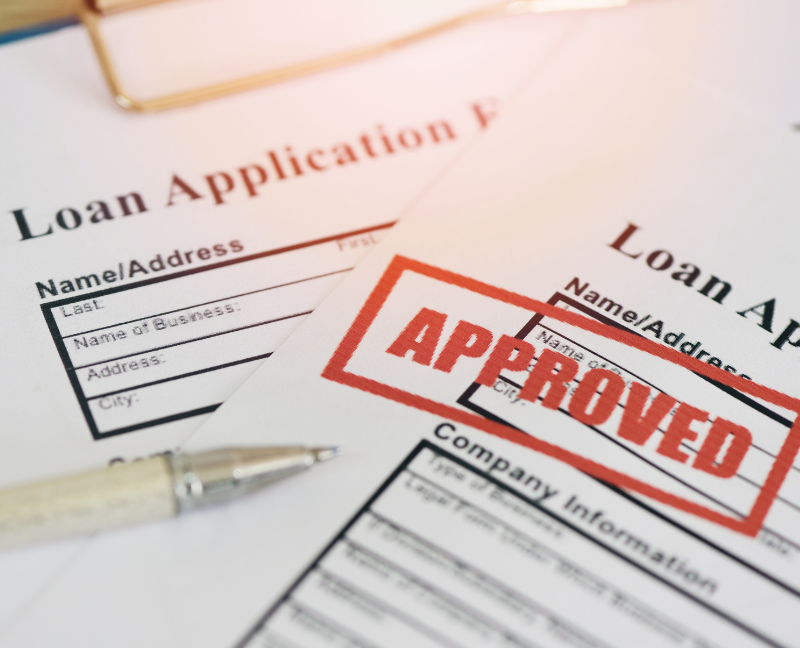Whether you've started the home-buying process or you're planning to refinance, you've probably heard of loan estimates.
In essence, a loan estimate gives you a list of the things you need to know about the loan you're applying for. This includes the interest rate, other charges, etc. Once you have it, you can know and adjust your budget and get ready for the down payment.
It consists of a three-page document providing loan information, including interest rate, monthly payment, and the total closing cost of the loan. It also contains information about the estimated cost of taxes and insurance and how the interest rate and payments may change in the future.
The form also specifies if the loan has special features you want to include, any penalties you might pay off for early or late repayment, negative amortization, etc. Therefore, you mustn't just read the form but also, understand it.
The loan estimate is usually easy to read and understand. It often comes with a complete explanation of the loan and what it covers. All lenders use a standard loan estimate form, so the simple format makes comparing much easier to see which loan provider offers the best option.
Normally, you can expect your loan estimate in as fast as three business days, unless you don’t meet the lender's qualifications and your application is rejected.
When this happens, lenders must give you a written notice within 30 days and state why your application is being rejected. A loan estimate has no cost, the only fee you will pay to get a loan estimate is the credit report fee.
When you do get a loan estimate, its validity is within 10 business days. So, you need to evaluate carefully within this period if you will accept the loan offer or not. You may request the lender to change the terms and give you a new loan estimate if you need more time to think and compare with other offers. However, even if lenders give you a new estimate, it doesn't necessarily mean it has a different or worse offer.
Nonetheless, it may change depending on the market conditions and your credit. Like stocks, mortgage rates can change multiple times within a single day, So, you need to be sure of the property you want to buy and that you like it before making an offer and deciding to move forward.
You need to review your loan estimate carefully before you move forward to the underwriting process to make sure you understand the loan and can afford to pay it. You can and should get a loan estimate before finding a property you want to buy, especially in a seller’s market where buyers need to act quickly to make a purchase offer. In case you still don’t have the address of the home you want, you can provide a similar type of home and its price since a loan estimate is not an official pre-approval, lenders can still issue a revised estimate after you have chosen a property. If you do move forward, lenders will then ask for additional financial information.
Having a mortgage pre-approval and even a pre-underwriting can make you feel confident about getting the financing. You can check your loan estimate against closing disclosure before you sign your closing documents.

Requirements To Get A Loan Estimate
Getting a more detailed estimate means you need to provide more information such as your debts, specific loan type, and other financial information.
You may ask the lender if there are any inaccurate details on your name. Having a misspelled name can lead to major issues and can cause delays.
Check this information to make sure that what is written is what you discuss with your lender.
Take a look if the loan amount is what you are expecting. On a house purchase, the loan amount plus your down payment should equal the sale price of the house.
The principal is the amount you will borrow from the lender while the interest is the charge lenders put for lending you money. Expect that your total will be higher and pay more due to taxes and insurance.
Check if there are charges related to homeownership that are bundled in your monthly payment.
Make sure that the total here is what you expected since this will be your monthly payment including the insurance.
Do you have items in this section that are not escrowed? If you do, you’ll need to pay this cost directly in large lump sum payments and ask how often you need to make these payments.
This is the upfront cost you will be charged to get your loan and transfer ownership of your property This is included in your payment at closing.
This is an additional payment you have to pay, so having extra funding is a must.
Terms You Need to Know When Looking On Your Loan Estimate:
These are the things you need to know about loan estimates. If you have more questions, feel free to drop them in the comments or call us at 317-316-8224 we can assist you.
Are you wondering how loans work? If yes, then you’re in the right place!
In this post, we’ll talk about the basic things you need to know about loans, including how it works, the types of loans, short-term and long-term loans, and more.
When it comes to loans, personal loans are the most popular. Its terms, cost, and interest can vary from one lender to another. Whether you use it for family, medical costs, paying for a title company, or unemployment funds, this type of credit is one of the easiest ways to address financial struggle and difficulty.
However, it should not be taken lightly. Whether it’s your first time taking out a personal loan or not, it’s important to know how to compare loans from different lenders. If you have multiple loan options, you can look for the best deals for you and compare the fees, interest, and terms before making any decisions.
Here are a few things to consider when choosing the best loan for you.
The best personal loan for your purpose depends on your current financial status. You may look for the basic type of personal loan with monthly interest and regular repayments that will be made over a stated period.
Short-term loans have higher monthly mortgage payments but often have a lower interest rate. Depending on your loan term, when you pay off your balance shorter than expected, you may pay less in interest overall. It usually has a 6-month to less than 3-year payment.
The long-term loan has higher repayment tenures and can be repaid over an extended period. It usually takes from 3 years to 30 years.
You can compare the different loan terms and then choose the shortest term available for you. As mentioned above, it can have a higher monthly payment but has a lower overall interest rate and you can finish your loan sooner. If, for some reason, you can’t take the short-term loan, then you may consider taking the longer-term loan.
The interest rate and annual percentage rate is one of the important factors that you need to consider in deciding which loan is best for you.
The interest rate on your loan is the percentage of the total amount of loan you’re borrowing and will have an impact on its cost. The annual percentage rate that is sometimes offered in the loan includes the interest rate plus loan fees and can give you a better sense of the loan's true cost.

The interest rate has two types: Fixed rate and variable – A fixed-rate interest stays during the loan, you’ll pay the same rate until you finish paying for your loan. While a variable can change and can increase during the loan payment term. You can compare the interest rates and also review and take a good look at the annual percentage rate.
Having good credit means lenders can give you low-interest rates because you’re a less risky borrower. So, maintain good credit to earn you a better offer.
Secured And Unsecured Loans
Secured loans are debts protected by collateral. This means that when you apply for a loan, the lender will want to know your assets and use them as a backup for the loan. In case of default, the lender will acquire your property to compensate for the remaining payments.
It is risky, however, it usually has lower charges and interest rates, better repayment terms, and a higher chance of approval.
One example of a secured loan is a title loan wherein the car is the collateral. In exchange for the loan amount, the borrower must surrender a physical copy of the car title and get it back once the loan is fully paid.
Meanwhile, there are unsecured loans that won’t require any guarantee or collateral from the borrower. That means you can borrow from the lender without surrendering a title or any of your property. While it sounds less risky, it often comes with higher interest rates and fees.
Collateral
Collateral is an item or property of the borrower that is of value and pledged to the lender to secure a loan. With collateral, lenders can reduce the risk of not getting paid. The lender has the right to take hold of and sell the property to get its losses if the borrower is unable to pay on the loan agreement.
Fees
These are the charges lenders can apply on a loan. Fees help lenders to cover the costs associated with processing a loan. Here are some common fees:
Monthly Payment And Long Term Affordability
Monthly payment is the amount that you have to pay each month until your loan is fully settled.
Therefore, you have to take into consideration the amount you have to pay every month. Make sure that it doesn’t affect your budget so you can still pay your other bills while repaying your loan.
While some loans may provide a lower monthly payment than other loans, you have to think thrice before accepting offers. If you are on a tight budget and are looking for an interest-only payment or other types of low-payment loan, weigh things and think of what you can afford.
Generally, getting a loan with the lowest interest rate and loan term is ideal so it’s easier to afford the monthly repayments.
Consider The Total Amount Owed
The total amount owed includes the amount of money borrowed plus the interest and fees. You need to think and evaluate and choose a loan that has the least amount of money owed on the entire agreement term of course. If it’s too big or out of budget, you might want to look for another loan option.
Final Thoughts
A loan might sound like a good solution, especially when you’re running out of cash and you have no other options. However, you have to consider a lot of things, including the kind of loan you’ll get, the properties to surrender, and the interest rate.
Knowing the terms, and features of the loan, and how to shop for options give you an advantage in finding the one that suits you and may help you avoid falling prey to bad debts.
The majority of buyers select a 30-year fixed-rate mortgage, giving them three decades to pay off their house.
A 15-year mortgage, for example, would be a shorter loan term option. This will cut the time it takes to pay off your loan debt in half and probably save you tens of thousands in interest. But there will be a significant rise in your monthly expenses.
Which mortgage, a 15 or a 30-year one, is the better option for you? That relies on a variety of elements, such as your financial situation, your life goals, and what you can buy.
A 30-year fixed-rate mortgage loan is the best option for many people. Simply put, it enables more affordable monthly payments, which is why. The drawback is that it can take more time to build up your equity and pay off your debt.
Because of this, some homeowners choose a 15-year mortgage, which has a shorter loan duration.
However, this does not imply that a 15-year loan is always the best option.
Since you must pay off the same amount in half the time, the biggest disadvantage of a 15-year mortgage is that the monthly payments are significantly higher. Because of this, many homeowners are unable to make their monthly payments.
You and your loan officer must weigh the costs and possible savings of a 15-year mortgage against a 30-year mortgage to determine which is best for your financial circumstances.

Last but not least, a 15-year loan will cost you significantly less in total interest charges than a 30-year mortgage. There are two factors for that. First off, your interest rate is probably going to be lower. The second reason is that you won't be paying interest for as long.
What would you rather choose? A 15-year repayment term or 30 years?
We'd love to hear your thoughts in the comments. Thank you!